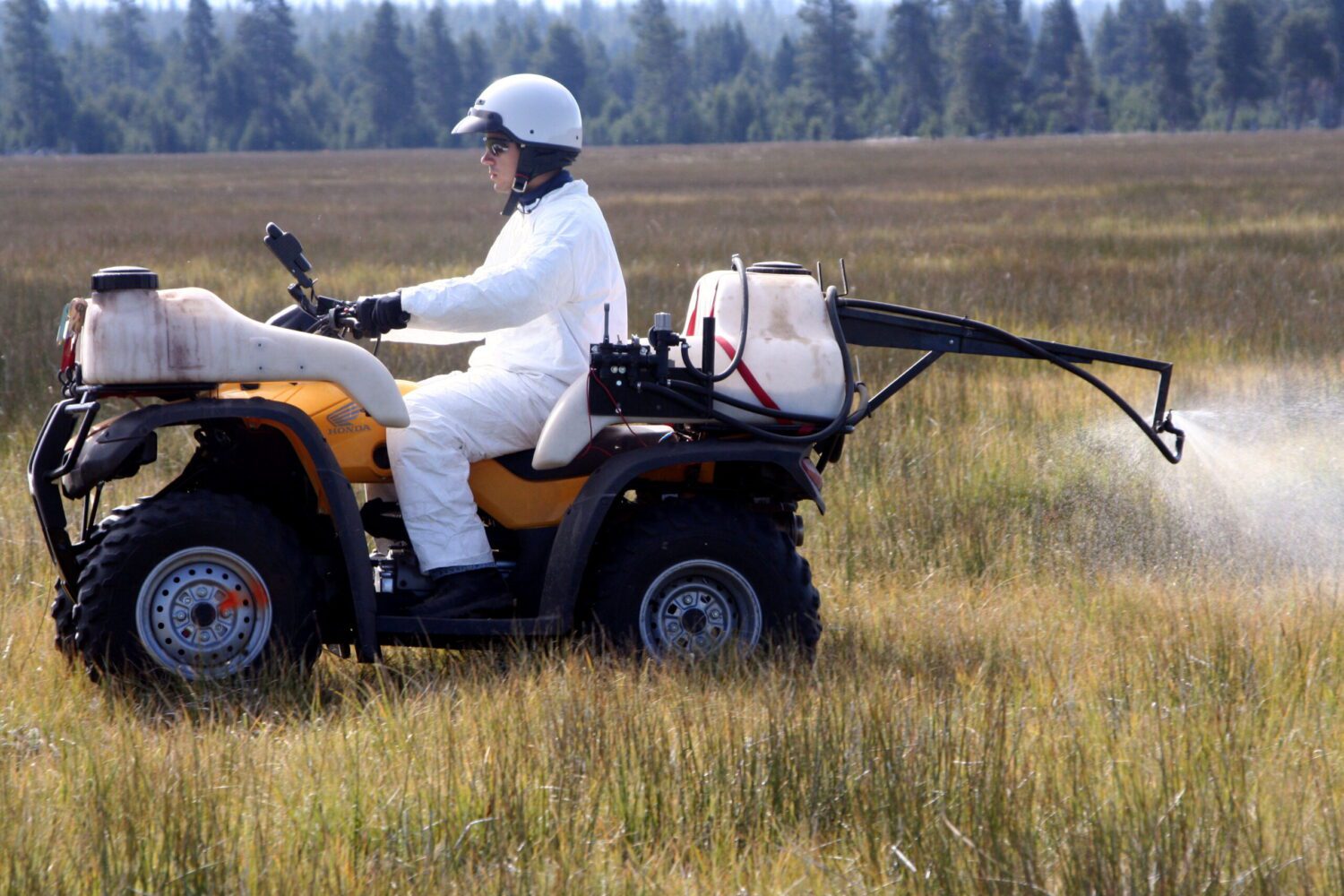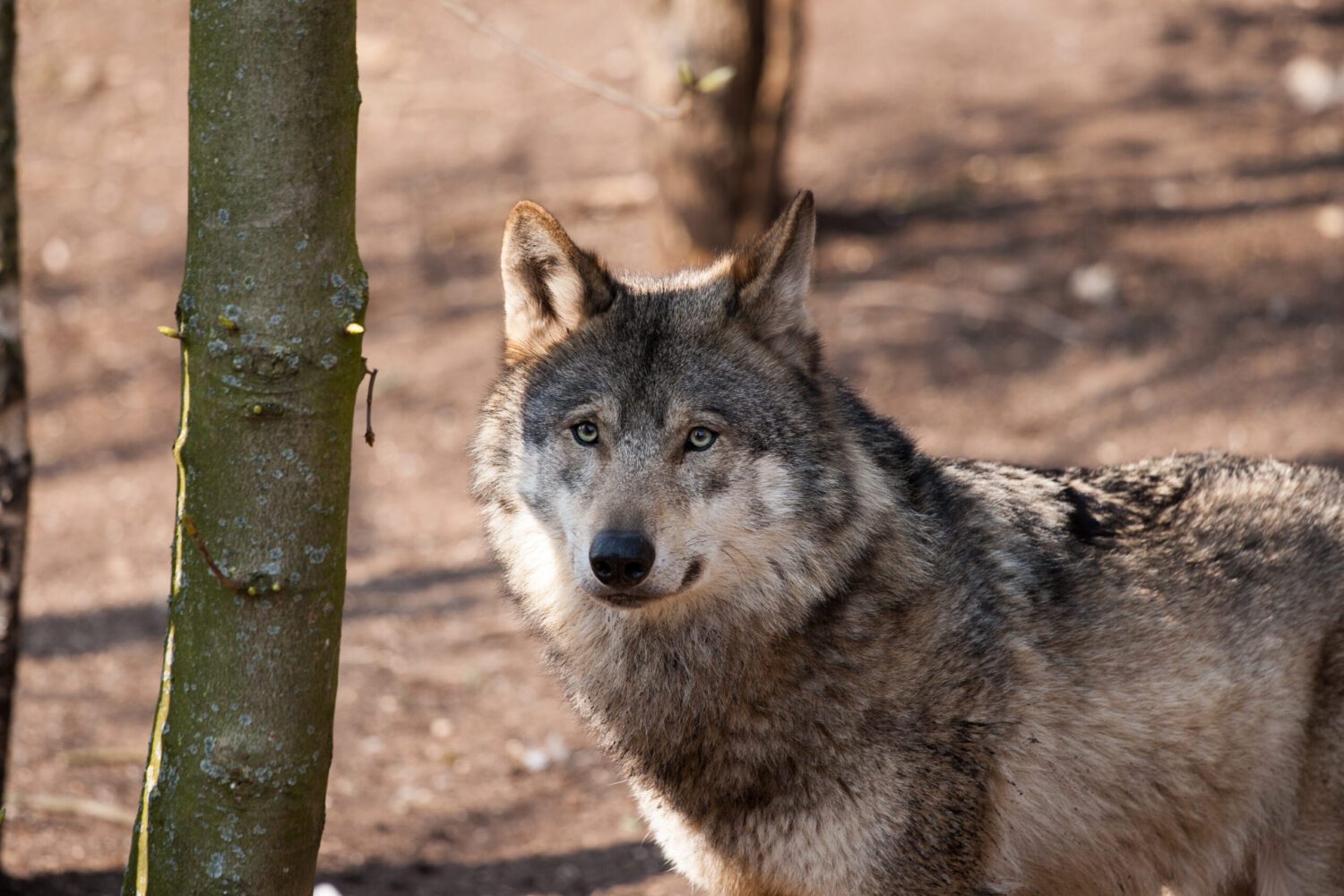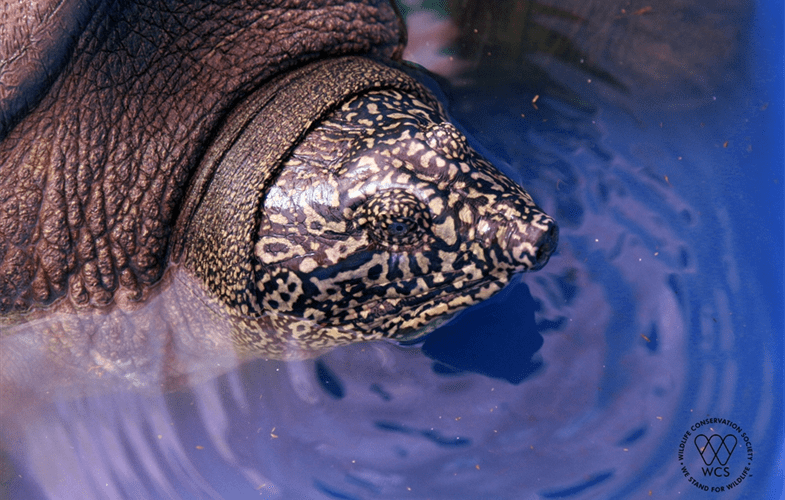


A growing body of research suggests a connection between the pesticide paraquat and Parkinson’s disease.
By Miguel Leyva, Independent Media Institute
8 min read
Agricultural workers in the United States currently use more than 400 different pesticides on their crops to ensure “higher yields and improved product quality.” These pesticides, however, threaten the health of people who work with them on farms or agricultural land and of those who live near these areas. Two of the most dangerous pesticides that are still in use in the U.S. are paraquat and rotenone. Exposure to these pesticides was found to lead to an increased risk of developing Parkinson’s disease, according to various studies.
Paraquat was first commercially produced in 1961 and is used to destroy weeds and grasses resistant to glyphosate, another toxic pesticide sold across the country under the name Roundup. As for rotenone, it was formulated in 1895, but it was only during the last century that it started being employed on a large scale to get rid of unwanted herbs and pests.
Paraquat is extremely dangerous and poisonous, and a single sip of this pesticide can immediately cause death. For this reason, it is a “restricted use pesticide,” which means that agricultural workers who intend to use it have to undergo special training before “mixing, loading, and/or applying paraquat.” During this special training, people who work with this pesticide are taught about the toxicity of paraquat, how to apply it safely to crops, and how to minimize exposure while working with it.
However, even if paraquat is used correctly, it can still cause significant health risks for agricultural workers. When they take off their protective equipment, vapors of paraquat from the crops can easily travel with them to their farms or homes. And there is also the danger of workers unavoidably inhaling the pesticide. Paraquat can also infiltrate groundwater and soil, causing serious environmental damage.
Why Do Authorities Still Allow the Use of Paraquat?
Paraquat is applied to more than 100 crops throughout the country. Developing a pesticide as effective as paraquat is hard work. This is one of the reasons why the Environmental Protection Agency (EPA) continues to allow the use of paraquat in the United States. Presently, paraquat is banned in more than 50 countries, including China, the United Kingdom, Thailand and the European Union. Nevertheless, it remains one of the most widely used pesticides in developed countries like the United States and Australia.
Unsettlingly, more than 8 million pounds of paraquat is used throughout the U.S. every year, according to a 2019 press release by the Center for Biological Diversity, with California ranking first as the state using the most pesticides in the U.S., according to the 2016 data provided by the U.S. Geological Survey (USGS), which was published by Priceonomics. California made up for more than 11 percent of all pesticides used nationally. The state “[used] nearly twice as much as the second-ranking state, Washington,” according to Priceonomics.
Paraquat is still used on crops because it spares agricultural workers “arduous labor,” according to Syngenta, an agricultural company that produces paraquat. The pesticide also “[protects] against invasive weeds and [helps] produce agronomically important crops like soy, corn and cotton.” Given the popularity of the pesticide, paraquat can be found on the market under numerous brand names, including, Blanco, Gramoxone, Devour, Parazone and Helmquat.
In 2019, the EPA stated in a draft report on paraquat that there is “insufficient evidence” to link the pesticide to human health concerns. As a result, the agency deemed paraquat safe for use in the United States as a “Restricted Use Product.” In 2019, Representative Nydia Velázquez (D-NY) introduced the Protect Against Paraquat Act, which seeks to prohibit the sale and use of paraquat in the country. There has, unfortunately, been no further substantial progress relating to the bill since then.
As of early 2021, the EPA has been considering renewing its approval for paraquat. The agency is expected to make a decision on this issue by the end of 2022. In the meantime, the EPA advises people to take the following precautions until new regulations come into effect:
- Paraquat must be used only by a certified applicator who has undergone the required special training.
- Paraquat should never be stored in a food or drink container so as not to be mistaken for a product that can be ingested.
- Paraquat must always be kept away from children, as there have been several cases of accidental poisoning.
- Paraquat should ideally not “be stored in or around residential [buildings].”
- Paraquat must “[n]ever be used around home gardens, schools, recreational parks, golf courses or playgrounds.”
The Link Between Paraquat Exposure and Parkinson’s Disease
Even though the EPA states there is insufficient evidence to support the link between paraquat exposure and Parkinson’s disease, numerous reputable medical studies beg to differ. For instance, according to a Farming and Movement Evaluation (FAME) study, which included 110 people who had developed Parkinson’s disease and 358 matched controls, there is a link between rotenone and paraquat and Parkinson’s disease. “People who used either pesticide developed Parkinson’s disease approximately 2.5 times more often than non-users,” stated a press release by the National Institutes of Health, one of the agencies that was involved with this study.
Parkinson’s disease is a disorder affecting the brain “that leads to shaking, stiffness, difficulty with walking, balance, and coordination,” according to the National Institute on Aging. The symptoms “usually begin [appearing] gradually and get worse over time.” Regular exposure to paraquat is known to cause Parkinson’s disease by increasing the risk of developing the disease by a whopping 250 percent, according to a 2018 study by Canada’s University of Guelph. A medical study published in the American Journal of Epidemiology revealed that exposure to paraquat and another pesticide called maneb within 1,600 feet of a home heightened the risk of developing Parkinson’s disease by 75 percent.
People heavily exposed to paraquat who are susceptible to developing Parkinson’s disease include agricultural workers, farmers, people working on animal farms, individuals who reside on farms, and people who live in a rural area and drink well water. Additionally, people working as chemical mixers and tank fillers are also at risk of developing Parkinson’s disease due to their contact with paraquat.
Drinking well water from a location close to a crop to which paraquat has been applied can be dangerous because the pesticide can easily reach the groundwater. Those frequently exposed to paraquat-contaminated water are at risk for the gradual accumulation of the pesticide in their bodies, posing a health danger.
When someone is exposed to paraquat, the pesticide tends to travel through the lungs or the stomach and eventually reaches a portion of the brain medically known as the substantia nigra region. This brain region is responsible for releasing dopamine, a crucial neurochemical that plays a significant role in how many systems of the central nervous system function—from movement control to cognitive executive functions. Once paraquat reaches the substantia nigra region, it depletes the neurons that produce dopamine, a process that is associated with Parkinson’s disease. The damage caused by paraquat to these neurons can ultimately result in the impairment of essential brain functions.
The Future Is Organic
Because fruits, vegetables and cereals harvested from organic crops have been treated with natural and synthetic pesticides, which are less likely to cause health problems, they are the perfect alternative to conventionally grown produce. Natural and synthetic pesticides are not as toxic as paraquat or glyphosate and include copper hydroxide, horticultural vinegar, corn gluten, neem and vitamin D3. Furthermore, organic products usually have more nutrients, such as antioxidants. People with allergies to foods, chemicals or preservatives can greatly benefit from such healthy food sources. They may even notice that their symptoms alleviate or go away when they eat exclusively organic food.
However, the downside of organic food and growing organic crops is that they require more time, energy and financial resources. There is a greater labor input by farmers when it comes to organic crops, which makes these products more expensive. Another reason why organic food is pricier than conventionally grown produce is that organic agricultural farmers do not produce enough quantity of a single product to reduce the overall cost. The regular maintenance of organic crops is also time-consuming, as farmers have to be very careful with unconventional pesticides used to keep weeds, unwanted herbs and pests at bay during organic farming.
Even so, eating organic is undoubtedly the future, as most nonorganic produce contains significant traces of toxic pesticides such as paraquat that inevitably accumulate in our bodies over time, being able to trigger severe diseases in the future. While eating organic food may be more expensive, it is wiser to invest in these products given the health benefits. However, it is true that the accessibility and affordability of healthy organic foods is a strong issue among the U.S. food system inequities. Nowadays, organic foods don’t necessarily come from small local farms. They are largely a product of big businesses, most of them being produced by multinational companies and sold in chain stores. These leading food and agriculture companies should invest more in the consumers’ well-being and offer nutritious food affordable to all communities.
One solution would be the implementation of government schemes to promote organic farming and incentivize farmers to transition to organic agriculture. Instead of supporting factory farms, the government could support sustainable family farms, which often farm more ethically. It could lower healthy food costs and address the health crisis brought on by the mass consumption of unhealthy processed foods. Organic foods will not only lead to better health but will also discourage the practice of applying hazardous pesticides on conventionally grown crops, doing away with the health and environmental hazards involved in the process.
###
Miguel Leyva is a case manager at Atraxia Law, where he researches how farmers and workers with Parkinson’s disease and other disabilities have had their health affected by exposure to pesticides such as paraquat.
Take action…

Pesticide Action Network: “The Food and Agriculture Organization (FAO) recently signed a letter of intent to formalize a partnership with CropLife International. CropLife is the global trade association representing all of the largest agrochemical, pesticide, and seed companies. This alliance would be dangerous for the future of our global food systems. …
“Recent estimates show that there are 385 million cases of acute pesticide poisonings each year, up from an estimated 25 million cases in 1990. This means that about 44 percent of farmers and agricultural workers around the world are poisoned each year by an industry dominated by CropLife members. Pesticide products produced by CropLife member companies decimate pollinator populations and are wreaking havoc on biodiversity and already fragile ecosystems.”
Urge Food and Agriculture Organization Director-General Qu Dongyu to end their dangerous alliance with the pesticide industry.
Cause for concern…

Freshwater supplies could peak sooner for millions of people worldwide
“The world’s glaciers may contain less water than previously believed, a new study has found, suggesting that freshwater supplies could peak sooner than anticipated for millions of people worldwide who depend on glacial melt for drinking water, crop irrigation and everyday use,” reports Raymond Zhong for the New York Times.
“The latest findings are based on satellite images taken during 2017 and 2018. They are a snapshot in time; scientists will need to do more work to connect them with long-term trends. But they imply that further global warming could cause today’s ice to vanish in many places on a shorter timeline than previously thought.”
—Raymond Zhong, “Water Supplies From Glaciers May Peak Sooner Than Anticipated” (New York Times, February 7, 2022)
Round of applause…

Judge restores gray wolf protections
“A federal judge [on February 10] restored Endangered Species Act protections for the gray wolf, marking a big win for environmentalists in a high-profile fight that’s raged across the Western landscape,” reports Michael Doyle for E&E News. “In a decision that addressed three related challenges filed by environmental groups, U.S. District Judge Jeffrey White struck down the Fish and Wildlife Service’s decision to remove the iconic animal from the ESA list.
“‘The Final Rule relies on the recovery of core metapopulations of wolves in the Great Lakes and Northern Rocky Mountains to conclude that wolves across the entire lower 48 states no longer qualify for federal protection,’ White noted. But White, who was appointed by President George W. Bush to the U.S. District Court for the Northern District of California, declared that ‘the Service did not adequately consider threats to wolves outside of these core populations.’
“White added that the FWS concluded ‘with little explanation or analysis, that wolves outside of the core populations are not necessary to the recovery of the species [and] … in so concluding, the Service avoided assessing the impact of delisting on these wolves.’”
—Michael Doyle, “Judge restores gray wolf protections” (E&E News, February 10, 2022)
ICYMI…

Culturally revered, critically endangered turtle gets a ray of hope
“When two of the last remaining Swinhoe’s softshell turtles died without producing any known offspring between 2016 and 2019, this species became the most endangered turtle in the world.
“In response, conservationists and veterinary experts from Vietnam, along with global partners, made the recovery of this turtle one of their highest priorities. Swinhoe’s softshell turtles were also included in the five-year conservation plan of Hanoi People’s Committee in 2018 and added to the committee’s 2030 vision plan.
“Then, in October 2020, a female turtle was captured in Vietnam and confirmed by veterinarians to be a female Rafetus swinhoei. With the leadership of the Hanoi Department of Agriculture and Rural Development, in collaboration with the Asian Turtle Program of Indo-Myanmar Conservation and our organization, the Wildlife Conservation Society, this imperiled turtle species may now have a second chance at survival.”
—EFL contributors Hoang Bich Thuy, Nguyen Dinh Thang, “New Discovery Gives World’s Most Endangered Turtle a Fighting Chance” (DownToEarth, August 4, 2021)
Parting thought…

“There is no vertebrate group facing greater survival problems today. Turtles saw the great dinosaurs come and go and are now facing their own extinction crisis.” —John L. Behler
Earth | Food | Life (EFL) explores the critical and often interconnected issues facing the climate/environment, food/agriculture and nature/animal rights, and champions action; specifically, how responsible citizens, voters and consumers can help put society on an ethical path of sustainability that respects the rights of all species who call this planet home. EFL emphasizes the idea that everything is connected, so every decision matters.
Click here to support the work of EFL and the Independent Media Institute.
Questions, comments, suggestions, submissions? Contact EFL editor Reynard Loki at [email protected]. Follow EFL on Twitter @EarthFoodLife.
